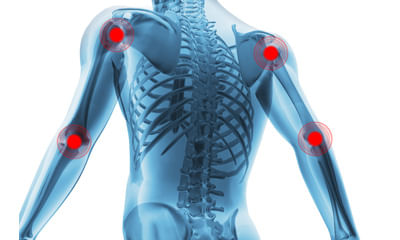Get the App
For Doctors
Login/Sign-up
Health Feed
Find Doctors
Health Packages
AllQ&AsTips
Thumb Questions
Health Query
Share
Bookmark
Report
Rest. Avoid activities that require repetitive gripping, repeated grasping or the prolonged use of vibrating hand-held machinery until your symptoms improve. If you can't avoid these activities altogether, padded gloves may offer some protection.
A splint. Your doctor may have you wear a splint at night to keep the affected finger in an extended position for up to six weeks. The splint helps rest the tendon.
Stretching exercises. Your doctor may also suggest gentle exercises to help main...more
A splint. Your doctor may have you wear a splint at night to keep the affected finger in an extended position for up to six weeks. The splint helps rest the tendon.
Stretching exercises. Your doctor may also suggest gentle exercises to help main...more
35 people found this helpful
Asked for female, 19 years old from Bhopal
Share
Bookmark
Report
Asked for male, 51 years old from Kottayam
Share
Bookmark
Report
This stretch releases pressure on misaligned, painful toes.
Sit with your feet flat on the floor.
Lift your right leg and place your ankle on your left thigh.
Intertwine the fingers of your right hand with your toes.
Stretch your toes apart with your fingers as long as you're able.
Put your foot back on the floor. Doing toe curls builds up the flexor muscles of the toes and feet, improving overall strength.
To do this exercise:
sit up straight in a chair, with the fee...more
Sit with your feet flat on the floor.
Lift your right leg and place your ankle on your left thigh.
Intertwine the fingers of your right hand with your toes.
Stretch your toes apart with your fingers as long as you're able.
Put your foot back on the floor. Doing toe curls builds up the flexor muscles of the toes and feet, improving overall strength.
To do this exercise:
sit up straight in a chair, with the fee...more
36 people found this helpful
Asked for male, 53 years old from Faridabad
Share
Bookmark
Report
Hemiparesis refers to a moderate or incomplete weakness or reduction of strength on one side of the body. In contrast, hemiplegia denotes a severe or total loss of strength or paralysis on one side of the body. The primary distinction between these two conditions lies in their levels of severity.
13 people found this helpful
Asked for male, 53 years old from Faridabad
Share
Bookmark
Report
Treating hemiparesis and recovering strength on the weakened side of the body is achievable. The treatment of hemiparesis is a comprehensive process that involves a multidisciplinary medical team. Your personalized treatment plan is likely to incorporate a combination of physical therapy, occupational therapy, rehabilitation therapy, and mental health therapy. By combining these therapeutic approaches, individuals with hemiparesis can maximize their potential for recovery and improve their overa...more
12 people found this helpful
Asked for male, 53 years old from Faridabad
Share
Bookmark
Report
While it is possible to recuperate from hemiparesis, it is important to understand that attaining the same level of strength as before the stroke may not be entirely possible. Complete recovery often requires a significant amount of time, ranging from weeks to months or even years. However, engaging in consistent rehabilitation exercises and therapy can play a crucial role in expediting the recovery process. By adhering to a regular rehabilitation regimen, individuals with hemiparesis can enhanc...more
10 people found this helpful
Asked for male, 53 years old from Faridabad
Share
Bookmark
Report
Hemiparesis refers to the weakness or limited movement experienced on a single side of the body, which can significantly impede daily tasks such as eating or dressing. This one-sided weakness in areas such as the arms, hands, face, chest, legs, or feet can lead to difficulties with balance and stability.
8 people found this helpful
Asked for male, 53 years old from Faridabad
Share
Bookmark
Report
Certainly, hemiparesis is prevalent among individuals who have survived a stroke. Approximately eight out of every ten stroke survivors encounter hemiparesis. Nonetheless, certain strokes or brain injuries can result in muscle weakness on the same side as the injury, known as ipsilateral hemiparesis.
7 people found this helpful
Asked for male, 53 years old from Faridabad
Share
Bookmark
Report
Yes, hemiparesis is considered as a disability which is a one sided weakness. Though this is not as debilitating as paralysis it has quite similar effects on the body. Main cuases for hemiparesis include stroke and also few diseases like cerebral palsy, a few cancers, and multiple sclerosis.
6 people found this helpful
Asked for male, 53 years old from Faridabad
Share
Bookmark
Report
Hemiparesis is most commonly caused by stroke, where specific body parts do not receive sufficient oxygen, resulting in cell death. When the regions associated with strength and movement are affected, it can lead to hemiparesis. Additionally, certain conditions like cerebral palsy, multiple sclerosis, and certain cancers can also contribute to the development of hemiparesis.
5 people found this helpful
Book appointment with top doctors for Thumb treatment
View fees, clinic timings and reviews
Ask a free question
Get FREE multiple opinions from Doctors
posted anonymously












